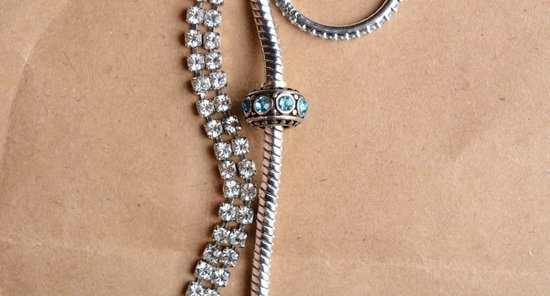What is the difference between fine jewelry and high jewelry? Jewelry has always held a significant place in the world of fashion and personal style. From ancient civilizations to modern-day society, the adornment of precious metals and gemstones has been a symbol of status, wealth, and personal expression. In this article, we will explore the distinctions between fine jewelry and high jewelry, delving into their histories, materials, designs, pricing, and cultural significance.
The history of fine jewelry dates back centuries, with artisans crafting intricate pieces using precious metals such as gold and silver adorned with gemstones like diamonds, rubies, and sapphires. Fine jewelry has evolved alongside fashion trends, reflecting the aesthetic preferences of different time periods while maintaining its timeless allure.
High jewelry, on the other hand, has a more exclusive and illustrious pedigree. This category of jewelry is known for its exceptional craftsmanship and exquisite design. High jewelry pieces are often one-of-a-kind or part of limited collections created by renowned luxury brands and celebrated designers. The distinction between fine and high jewelry lies in the level of craftsmanship as well as the rarity and exclusivity of the materials used in creating these exceptional pieces.
History of Fine Jewelry
The history of fine jewelry dates back to ancient civilizations, where people adorned themselves with precious metals and gemstones as a symbol of status and wealth. From the Egyptians to the Romans, fine jewelry has always been a significant part of human adornment. Throughout history, fine jewelry has evolved in design and craftsmanship, reflecting the cultural and artistic influences of different eras.
Evolution of Design
Fine jewelry has seen significant evolution in design over the centuries. Ancient fine jewelry pieces were often characterized by intricate patterns and symbolic motifs, reflecting the beliefs and customs of their respective cultures. As time progressed, different design movements such as Art Nouveau, Art Deco, and modernism have influenced the aesthetics of fine jewelry, leading to diverse styles that cater to various fashion sensibilities.
Technological Advancements
The evolution of technology has also played a crucial role in shaping the history of fine jewelry. Advancements in tools and techniques have allowed craftsmen to create more intricate and complex designs, pushing the boundaries of what is possible in fine jewelry making. This has led to the development of new setting styles, cutting techniques for gemstones, and innovative metalworking methods that contribute to the uniqueness and quality of fine jewelry pieces.
Cultural Influences
Throughout its history, fine jewelry has been influenced by different cultures around the world. Whether it’s incorporating traditional motifs into contemporary designs or using materials that hold cultural significance, cultural influences have enriched the diversity of fine jewelry. This fusion of diverse cultural elements has contributed to the timeless appeal and storytelling aspect of fine jewelry that continues to resonate with consumers today.
History of High Jewelry
High jewelry, also known as haute joaillerie, has a long and illustrious history in the fashion industry. The origins of high jewelry can be traced back to the royal courts of Europe, where it was often commissioned by royalty and aristocracy to showcase power and wealth. Unlike fine jewelry, which is more accessible to the general public, high jewelry is known for its exclusivity and rarity.
The craftsmanship and materials used in high jewelry are of the highest quality, often featuring rare and precious gemstones such as diamonds, emeralds, rubies, and sapphires. High jewelry pieces are meticulously handcrafted by skilled artisans, with attention to every detail. This level of craftsmanship sets high jewelry apart from fine jewelry in terms of not only quality but also value.
When it comes to design and aesthetics, high jewelry pieces are often more elaborate and extravagant than fine jewelry. They feature intricate designs that incorporate a higher number of gemstones and require a greater level of skill to create. High jewelry pieces are often one-of-a-kind or produced in very limited quantities, adding to their desirability and exclusivity.
In terms of pricing and exclusivity, high jewelry commands significantly higher prices than fine jewelry due to the use of exceptional materials and extraordinary craftsmanship. High jewelry pieces are considered investment-worthy due to their rarity and historical significance. This is what sets high jewelry apart from fine jewelry – it represents the epitome of luxury and sophistication in the world of fashion.
| Aspect | Difference |
|---|---|
| Materials | High Jewelry uses rare gemstones whereas Fine Jewelry uses more accessible materials. |
| Craftsmanship | High Jewelry requires meticulous handcrafting compared to Fine Jewelry. |
| Pricing | High Jewelry commands significantly higher prices compared to Fine Jewelry due to its rarity. |
Materials and Quality
Materials and Craftsmanship
When it comes to the difference between fine jewelry and high jewelry, one of the most significant factors is the materials used and the level of craftsmanship involved. Fine jewelry often uses precious metals such as gold, platinum, and silver, along with gemstones like diamonds, sapphires, and rubies.
The emphasis is on creating pieces that are beautiful and durable for everyday wear. Craftsmanship in fine jewelry is still of high quality, but it may not involve the intricate detailing and precision seen in high jewelry.
In contrast, high jewelry goes beyond using traditional materials and takes it up a notch by incorporating rare and exceptional gemstones like vivid-colored diamonds, Paraiba tourmalines, or rare pearls. The emphasis here is on exclusivity and rarity rather than practicality for everyday wear. High jewelry also showcases unparalleled craftsmanship, with artisans spending countless hours perfecting every detail of a piece to create a true work of art.
Quality and Durability
Both fine jewelry and high jewelry are known for their quality, but there are differences in terms of durability. Fine jewelry is designed to withstand daily wear, making it more resistant to scratches or damage compared to high jewelry pieces that may be more delicate due to their intricate designs and unique gemstone settings.
This means that while both types of jewelry are crafted with skill and attention to detail, high jewelry may require more careful handling and maintenance due to its finer details.
Legacy and Heritage
Another aspect that sets fine jewelry apart from high jewelry is the legacy associated with each category. Fine jewelry often represents classic designs that have stood the test of time, reflecting a rich heritage in craftsmanship and artistry. On the other hand, high jewelry emphasizes innovation and pushing creative boundaries, often being associated with renowned fashion houses or luxury brands that have a long-standing history in creating exceptional pieces that redefine luxury.
Design and Aesthetics
The difference between fine jewelry and high jewelry can be seen in the design elements and aesthetic qualities of each. Fine jewelry typically features classic and timeless designs that are meant to be worn every day, while high jewelry often includes more elaborate and ornate designs that are intended for special occasions or events. Fine jewelry may incorporate simpler settings and smaller gemstones, while high jewelry often showcases larger and more rare gemstones, along with intricate and unique designs.
In terms of aesthetics, fine jewelry tends to focus on elegance, simplicity, and wearability. The emphasis is on creating pieces that can be worn daily and complement a variety of outfits. High jewelry, on the other hand, prioritizes luxury, opulence, and uniqueness. These pieces are typically statement-making items that are designed to be eye-catching and showcase exceptional craftsmanship.
One of the key distinctions in design between fine jewelry and high jewelry is the level of creativity and artistry involved. While both types require skilled craftsmanship, high jewelry often pushes the boundaries of creativity with innovative designs and avant-garde concepts. Fine jewelry, while still requiring expert craftsmanship, tends to follow more traditional design principles.
Ultimately, when considering the design and aesthetics of fine jewelry versus high jewelry, it is important to remember that both have their place in the industry. Each serves a different purpose and caters to distinct preferences in style and adornment. Whether it’s a delicate diamond necklace for everyday wear or a show-stopping emerald-encrusted statement piece for a special occasion, there is something for everyone in both categories.
Pricing and Exclusivity
When it comes to fine jewelry and high jewelry, one of the key differences lies in their pricing and exclusivity. Fine jewelry is known for being more accessible to a wider range of consumers due to its relatively lower price point compared to high jewelry.
This is because fine jewelry typically features semi-precious gemstones or smaller, less rare diamonds, making it more affordable for the average consumer. On the other hand, high jewelry is characterized by its use of rare, top-quality gemstones such as large diamonds, sapphires, emeralds, and rubies, which significantly drives up the price of these pieces.
In terms of exclusivity, fine jewelry is often produced in larger quantities and can be found in retail stores or online shops. While some fine jewelry pieces may still be limited edition or have a level of exclusivity, they are generally more widely available.
High jewelry, on the other hand, is incredibly exclusive and often one-of-a-kind or produced in very limited quantities. These pieces are usually only available through select luxury boutiques or directly from high-end jewelers, adding to their allure and exclusivity.
The difference in pricing and exclusivity between fine jewelry and high jewelry ultimately comes down to the materials used and the craftsmanship involved in creating each piece. With rare gemstones and meticulous attention to detail being hallmarks of high jewelry, it’s no wonder that these pieces come with a higher price tag and an unparalleled level of exclusivity.
| Factor | Fine Jewelry | High Jewelry |
|---|---|---|
| Pricing | More accessible with lower price points | Higher price points due to rare gemstones |
| Exclusivity | Available in retail stores; may have limited edition pieces | Incredibly exclusive; often one-of-a-kind or produced in very limited quantities |
Celebrity and Red Carpet Presence
Celebrities and high-profile personalities have always been influential in setting trends and raising the profile of certain fashion accessories, including jewelry. The red carpet, in particular, has become a stage for showcasing exquisite pieces of both fine jewelry and high jewelry.
When it comes to celebrity and red carpet presence, both fine jewelry and high jewelry have their own unique appeal. Fine jewelry often features classic and timeless designs that complement the elegance of formal attire. This type of jewelry may include diamond stud earrings, simple yet sophisticated tennis bracelets, or traditional pearl necklaces.
On the other hand, high jewelry is known for its extravagant and avant-garde designs that make a bold statement on the red carpet. High jewelry pieces are often one-of-a-kind creations featuring rare gemstones, intricate designs, and impeccable craftsmanship that capture attention on the international stage.
In terms of red carpet appearances, fine jewelry is more commonly seen on a wider range of celebrities at various events. It has a broader appeal due to its versatility and understated elegance.
High jewelry, however, tends to be reserved for A-listers at major red carpet events such as the Oscars or the Met Gala. These exclusive pieces are often loaned to celebrities by luxury brands for these high-profile appearances and are designed to create impact through their rarity and exceptional beauty.
Conclusion
In conclusion, the difference between fine jewelry and high jewelry lies in the materials, craftsmanship, design, pricing, and exclusivity. Fine jewelry is typically made with precious metals like gold and silver, adorned with gemstones like diamonds, sapphires, and rubies. The craftsmanship is of high quality but not as intricate or extravagant as high jewelry.
On the other hand, high jewelry is crafted with the finest materials including rare gemstones, flawless diamonds, and exquisite pearls. The level of craftsmanship is unparalleled in high jewelry, often featuring elaborate designs and meticulous attention to detail.
While fine jewelry caters to a broader market and offers a more accessible range of pieces suitable for everyday wear, high jewelry targets a select clientele seeking extraordinary pieces that are often one-of-a-kind or produced in very limited quantities. As a result, the pricing of high jewelry far exceeds that of fine jewelry, reflecting its exclusivity and exceptional quality.
Both fine jewelry and high jewelry play significant roles in the fashion industry and have a strong presence on the red carpet and among celebrities. Fine jewelry can be seen as more understated elegance that complements various fashion looks, while high jewelry makes a bold statement with its grandeur and opulence.
In this way, both types of jewelry hold their own significance in the industry for different reasons; whether it’s for everyday luxury or for special occasions that call for extraordinary pieces. Understanding the differences between fine jewelry and high jewelry allows individuals to appreciate the artistry behind each category and make informed decisions when investing in these exquisite accessories.
Frequently Asked Questions
What Is High and Fine Jewelry?
High jewelry, also known as haute joaillerie, refers to the finest and most exquisite pieces of jewelry created by renowned designers and jewelers. These pieces often feature exceptional craftsmanship, rare and precious gemstones, and intricate designs. High jewelry is typically incredibly valuable and is designed for special occasions or collectors.
What Is Considered as Fine Jewelry?
Fine jewelry is categorized as any piece of jewelry made with high-quality materials such as gold, platinum, diamonds, and other precious gemstones. Fine jewelry often includes items like diamond engagement rings, pearl necklaces, gemstone earrings, and gold bracelets. These pieces are typically more expensive than costume jewelry but are not as extravagant or valuable as high jewelry.
What Is Considered High Quality Jewelry?
High-quality jewelry refers to well-crafted pieces made with durable materials and skilled workmanship. This can include fine metals like sterling silver or 14k gold, genuine gemstones that are carefully sourced and cut, as well as attention to detail in the design and construction of the piece.
High-quality jewelry is meant to withstand the test of time while still maintaining its beauty and allure.

Welcome to my jewelry blog! My name is Sarah and I am the owner of this blog.
I love making jewelry and sharing my creations with others.
So whether you’re someone who loves wearing jewelry yourself or simply enjoys learning about it, be sure to check out my blog for insightful posts on everything related to this exciting topic!





